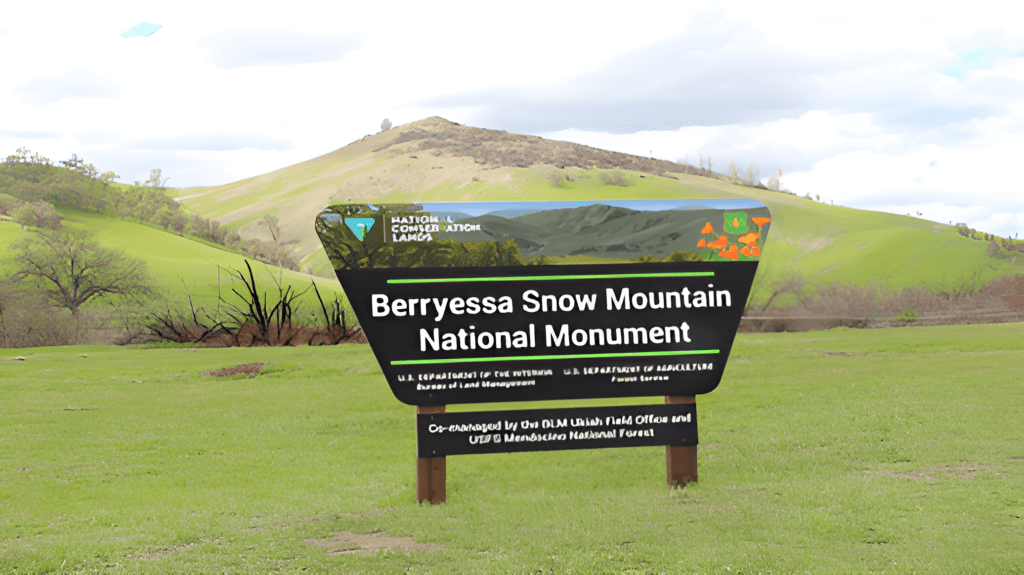In Northern California, the sprawling and diverse landscape of Berryessa Snow Mountain National Monument draws attention. The monument, created by President Barack Obama in 2015, spans more than 330,000 acres. Napa, Lake, Mendocino, Solano, Glenn, Yolo, and Colusa counties collectively encompass this region. Nature lovers flock there because the region’s unorthodox geographic makeup gives it one leg up over other regions.
Geography and Landscape
The monument stretches from the lowland valleys of the Sacramento River to the rugged peaks of the Coast Range. Elevation varies from 1,000 feet to more than 7,000 feet, and different ecosystems are found. The landscape ranges from oak woodlands and chaparral to alpine meadows and pine forests, respectively. Lake Berryessa is one of the area’s attractions, and it attracts kayarea’sanoes, sailing vessels, and fishermen to its shores. With breathtaking views of the surrounding areas, Mount Snow stands as the highest point within the monument.
Flora and Fauna
A variety of plant and animal species are found throughout the diverse topography in Berryessa Snow Mountain. Within the monument are rare and endemic species such as leather oak forests, tule elk, and California red-legged frogs. The oak woodlands are dominated by blue oak and valley oak, while the chaparral hosts manzanita, ceanothus, and buckbrush. At the higher elevations, there are Douglas fir and ponderosa pine for visitors to discover. This area is also home to many bald eagles, black bears, and northern spotted owls. Colourful annual wildflower blooms sport several brilliant colours in the spring and early summer.
Recreational Activities
The Monument attracts a very diverse group of visitors and provides an abundance of outdoor fun. Walking in the region is a popular activity, with trails rated easy through the complex. Snow Mountain Wilderness is one of the premier backcountry hiking locales. Boating, kayaking, and fishing: The shores of Lake Berryessa are nothing short of idyllic for outdoor recreation opportunities. Fishermen come to fish Bass, trout, and catfish. It is home to a wide variety of flora and fauna, drawing birders, photographers & dark-sky gazers. Hunting, camping, and horseback riding are also potential uses in some portions of the monument.
Culture and history
The Berryessa Snow Mountain area is rich in both historical and cultural importance. The town occupies the land of cinnabar or mercury mines, and for thousands of years, this region has served as home to Native American crews such as the Pomo and Wintun. It has a few archaeological sites and traditional practices preserving its cultural heritage. The telling of an unbroken story in the form of rock art, ancient village sites, and ceremonial areas reveals a dynamic people with a heritage stretching back tens of thousands of years. The Gold Rush and the logging era had their impacts on European settlers. You can explore California’s history by visiting numerous sites scattered across the state.
Conservation Efforts
It was created earlier this year and helped shelter the Berryessa Snow Mountain region of California. The national monument designation protects its biodiversity and cultural resources. The monument acts as an essential wildlife corridor, allowing animals to move between various ecosystems. Local and national organizations work together to steward the memorial and its resources, safeguarding it from threats such as wildfires, invasive species infestations, and overuse impacts. Efforts are also made to rebuild the habitats to recover from some types of human abuse, such as eroding riparian areas and destroyed forestlands.
Community and Accessibility
Local communities have been calling for Berryessa Snow Mountain to be preserved as wilderness for years. Local groups, environmental organizations, and Native American crews drove the designation as a national monument. These are the same groups that still have a say in how it is managed today. The site is open year-round, though winter conditions may lead to road and trail closures. However, those who may be planning to arrive in the park should call first for current conditions. There are many trailheads and campgrounds, making it easy to access various areas of the monument.
Challenges and Future Perspective
As with most protected areas, Berryessa Snow Mountain is not without its challenges. Climate change is one such threat, transforming habitats throughout their range and raising the potential for wildfires. There are also rampant human impacts like off-roading and unsustainable recreational use of the ecosystem. Initiatives to face these challenges are based on education, community involvement, and best management practices. With continued support from government agencies and local stakeholders, Berryessa Snow Mountain National Monument will remain a vital part of California’s heritage.

